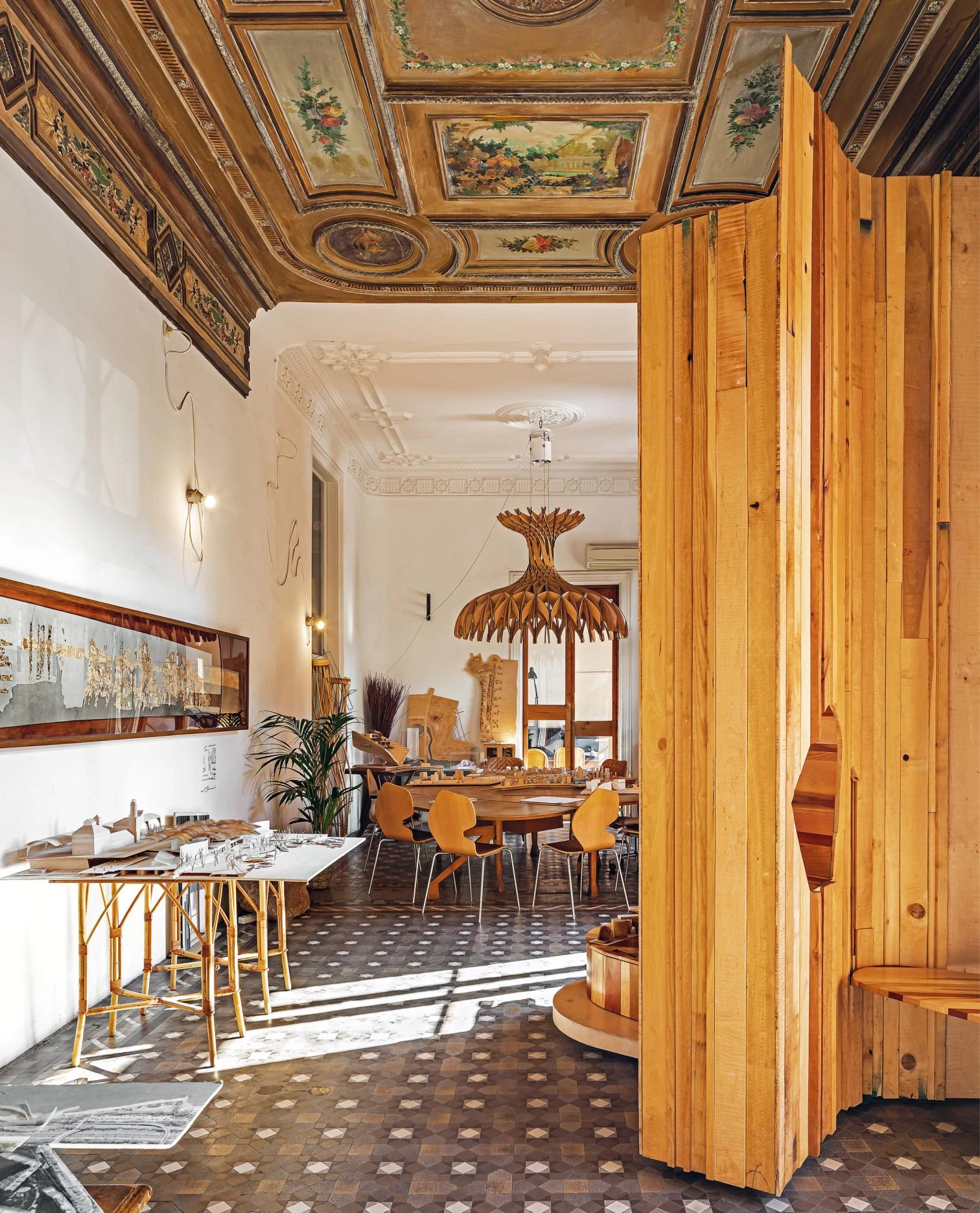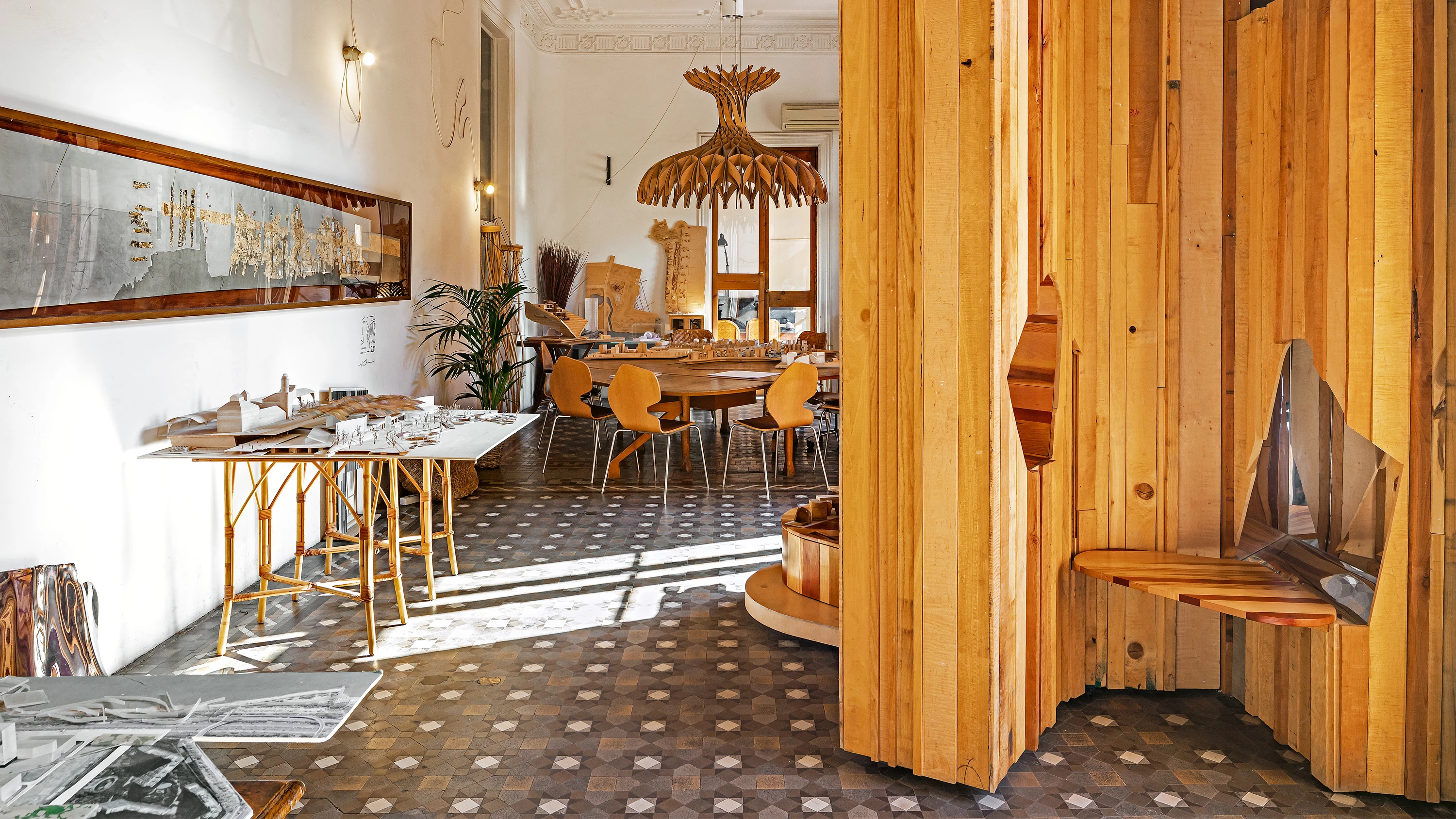Coreografía construida

In the year of the dragon, Benedetta Tagliabue completes three decades of work under the name EMBT. Twenty-five years since the premature disappearance of Enric Miralles, his initials and his spirit remain present in the activity of a studio that has strengthened its European focus with the projects in Benedetta’s native Italy and its Asian outreach with the works in China that followed the Spanish Pavilion in Shanghai. That ephemeral wicker basket took to the extreme the happy choreography that makes buildings feign arrested movement, but that lyrical dynamic was already present in buildings of the symbolic gravitas of the Scottish Parliament or of the colorful agitation of the Santa Caterina Market, and would later be expressed in masterful achievements like the Naples Station or the San Giacomo Church, with roofs that dance in a syncopated ballet that dazzles visitors or the faithful with spatial and tectonic emotion, under a structure both solid and weightless.
Contrary to forecasts that predicted the demise of the firm in the absence of its driving force, the Catalan-Milanese architect has managed to keep the flame of her deceased husband with the Foundation that remembers him, and above all with the vibrant studio where the trace of his brief and brilliant presence in Spanish architecture is extended with recognizable echoes and unexpected developments. Transformed by circumstances into a diva widow, Benedetta holds the huge merit of having taken the helm of the office in unfavorable times, with the important projects in China and the exquisite works in Italy, also completing pieces as personal and well-meaning as the Kalida Sant Pau Center, a building domestic in its welcome and public in its embrace, small in scale and large in the careful attention to its material warmth. Miralles’s trail lives on in Tagliabue, but she has built an independent personality that deserves a recognition that combines admiration and respect.
Last but not least, the installations express the joyful movement of the buildings with increased freedom, and perhaps their brief life and their limited dimension are the two features that allow them to abridge the poetics of a studio which, drawing from the fertile fountains of its origins, flows today with abundant autonomy. The graphic and photographic collages, which Enric Miralles already used in the bright path of David Hockney, often transcribe the aesthetic calling of EMBT with greater eloquence that its built materialization, so that the artistic determination that made the too brief life of Enric burn like a flare illuminates with its flashes the projects drawn in the choral office run by Benedetta. If the small spark of inspiration can light a big creative fire – ‘Parva scintilla saepe magnam flaman excitat’ – the much missed Barcelona architect is not to be found in the remains of the fire, but in the glow of the flames, because Enric lives on not in the ember, but in the spark.







